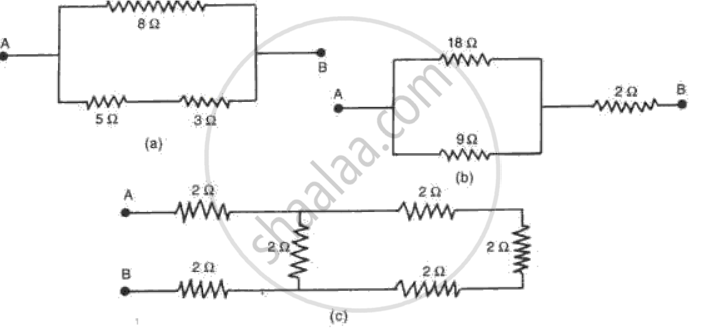Advertisements
Advertisements
प्रश्न
A current of 5 amperes flows through a wire whose ends are at a potential difference of 3 volts. Calculate the resistance of the wire.
उत्तर
Here:
Current, I = 5 A
Potential difference, V = 3 V
Substituting these values in the Ohm's equation, V/I = R:
Resistance of the wire, R = 3/5 = 0.6 Ω
APPEARS IN
संबंधित प्रश्न
The values of current I flowing in a given resistor for the corresponding values of potential difference V across the resistor are given below:
| I (amperes) | 0.5 | 1.0 | 2.0 | 3.0 | 4.0 |
| V (volts) | 1.6 | 3.4 | 6.7 | 10.2 | 13.2 |
Plot a graph between V and I and calculate the resistance of that resistor.
How much work is done when one coulomb charge moves against a potential difference of 1 volt?
The p.d. across a lamp is 12 V. How many joules of electrical energy are changed into heat and light when:
a charge of 1 C passes through it?
How is the electric potential difference between the two points defined? State its S.I. unit.
What is the combined resistance of each of the networks between A and B shown in fig. ?

The voltage across a 3Ω resistance is 6 V. How large is the current? What is
the resistance of a filament lamp when a voltage of 3 V across it causes a
current of 0.5 A?
Find the resistance of a conductor if the electric current flowing through it is 0.35 A when the potential difference across it is 1.4 V.
A 10 m long wire of a particular material is of reistance 5Ω What will be the resistance of 5m long wire of same material and the same thickness.
Exercise.
Calculate the amount of charge that would flow in 2 hours through an element of an electric bulb drawing a current of 2.5 A.
100 J of heat is produced each second in a 4 Ω resistor. The potential difference across the resistor will be:
